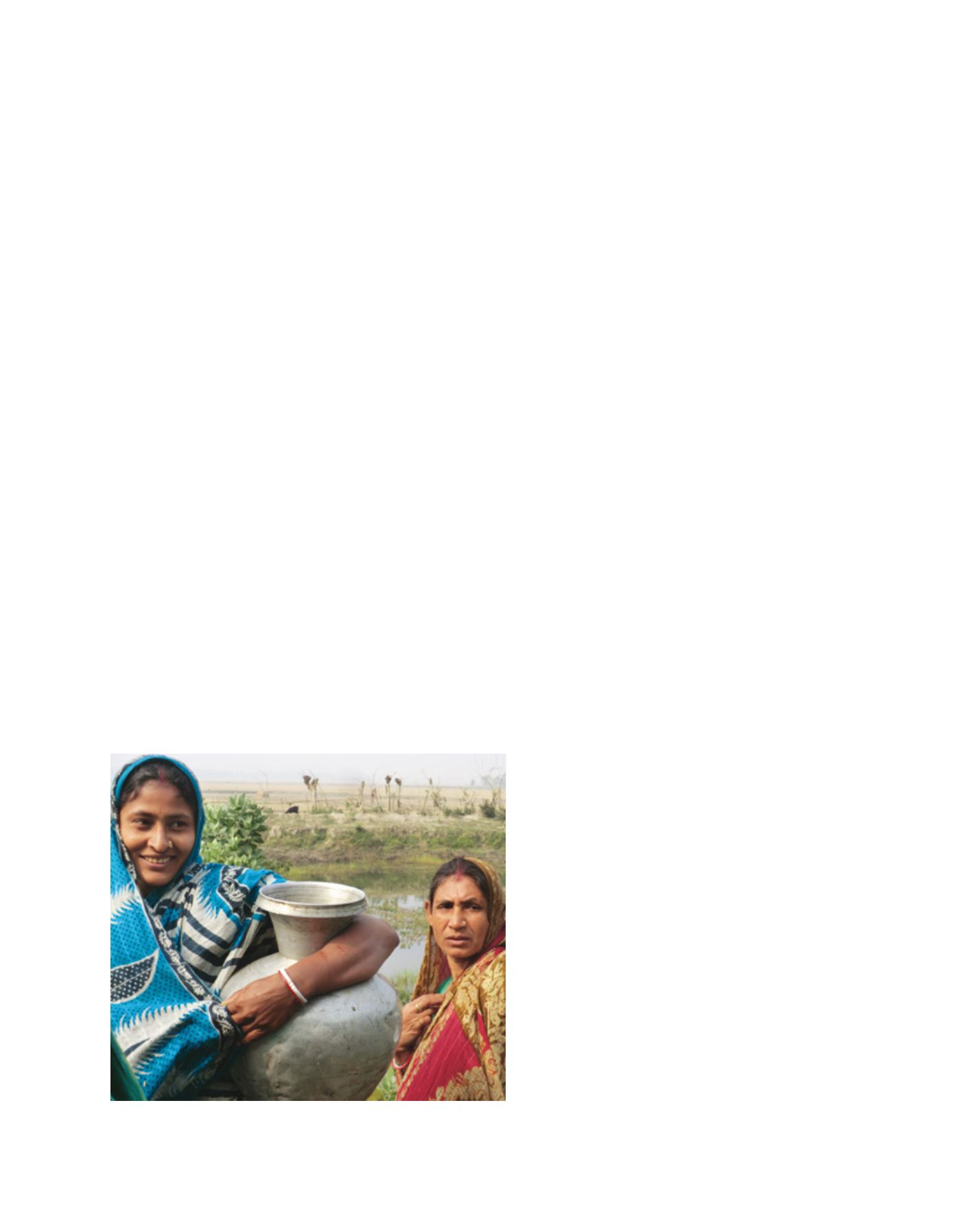

[
] 106
W
ater
E
ducation
and
I
nstitutional
D
evelopment
ered. Many cooperation activities for water-related
disaster risk reduction are implemented through
international programmes such as UN Water and the
United Nations Educational, Scientific and Cultural
Organization International Hydrological Programme,
of which the eighth phase (2014-2021) will deal with
water security issues.
3
Academic contributions
Interdisciplinary approaches at university (gradu-
ate school) level include the Global COE Program
for ‘Sustainability/Survivability Science for a Resilient
Society Adaptable to Extreme Weather Conditions’
(GCOE-ARS), implemented by the Disaster Prevention
Research Institute (DPRI) at Kyoto University, Japan.
4
This programme focuses on how human beings and
human society could adapt to global-scale changes
including climate change that incur extreme weather
and changes in the Earth’s water cycle, population
increase, urbanization, land use change, rural develop-
ment, desertification and so on. It especially emphasizes
scientific explanation and the prediction of weather and
hydrological disasters as well as social adaptation to
these events.
In Asia, as stated above, located in a humid climate
and tectonic zone, overpopulation and land develop-
ment are escalating. Africa has arid and semi-arid
regions as well as tropical rainforests. The environ-
mental conditions in these areas are more severe than
elsewhere in the world in terms of social and natural
aspects, and thus especially sensitive and vulnerable to
extreme weather. The people’s living and economy in
these areas provide implications for the survivability
of humans on Earth, while at the same time requir-
ing adaptation strategies to cope with more difficult
conditions expected in the future. GCOE-ARS pursues
sustainability science for survivability of humankind
and fosters world-leading experts by developing practi-
cal research in these areas in the world.
Another similar programme is ‘Inter-Graduate
School Program for Sustainable Development and
Survival Societies’ (Global Survivability Studies (GSS)
Programme), which was launched in 2011 to form a
strong interdisciplinary graduate school educational
system. This programme deals with four major areas:
• catastrophic natural hazards and disasters
• man-made accidents and disasters
• regional environment change and degradation
• food security.
These challenges of academic research and education,
led by DPRI, are intended to involve cooperation on
water-related disaster risk reduction with many over-
seas or international institutions and organizations,
as well as with local communities around the world.
We believe that this transdisciplinary approach can be
strongly connected to policy or real-world issues and
contribute to disaster risk reduction for sustainable
development of our Earth system.
Water cooperation and disaster risk reduction
Many kinds of cooperation activities have been implemented
in terms of water. Japanese official development assistance has
been contributing to developing countries by constructing water
resources systems, flood control facilities and other infrastructures,
such as dams, channels, water supply and irrigation systems in coop-
eration with the Japan International Cooperation Agency (JICA).
These structural measures have prevented or mitigated water-related
disasters and their risk.
In addition to these, another type of contribution includes emer-
gency management. After the Great Earthquake and Tsunami
disasters in east Japan, including Iwate, Miyagi and Fukushima
prefectures, there was land subsidence in a number of low-lying
areas where water inundation in residential districts, as well as
in agricultural lands, was a serious problem. The pumping cars,
which were prepared by the Ministry of Land, Infrastructure,
Transport and Tourism of Japan (MLIT), played a significant role
in the drainage of inundated water. The pumping cars were also
dispatched to the Chao Phraya River in order to drain floodwa-
ter in Bangkok and surrounding areas. This was a notable water
cooperation activity made by MLIT and JICA. Other water cooper-
ation examples can be seen in activities by the Japan Water Forum
(JWF), which carries out water supply and sanitation activities
at the grass-roots level through assistance to non-governmental
organizations and collaboration with local partners in develop-
ing countries. The JWF Fund awards grants of up to US$1,000 to
approximately 15 grass-roots organizations in developing coun-
tries every year, to support their activities and projects to improve
access to water and sanitation.
2
It is also important to bear in mind that risk communication
measures are useful in raising public awareness and preparedness
for coping with floods and droughts as well as waterborne disas-
ters including epidemiological infectious diseases such as malaria,
which are triggered by environmental or climatic drivers. Literacy,
communication skills and gender issues must be seriously consid-
Women collect water from surface sources in the coastal Satkhira district of
Bangladesh, where water bodies are mostly saline
Image: Dr Rajib Shaw, GSS Programme, Kyoto University


















